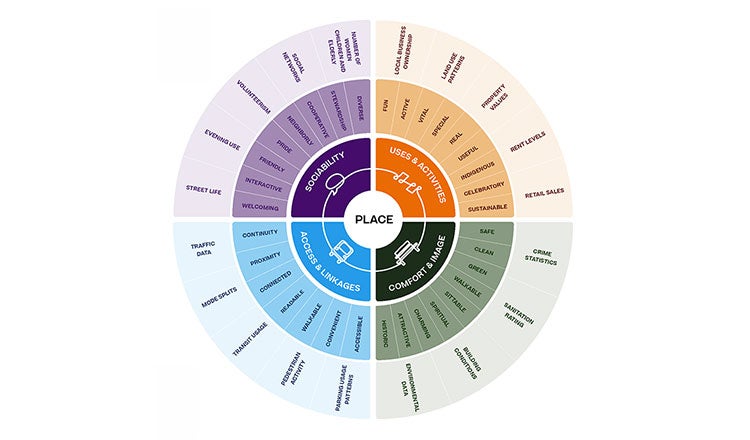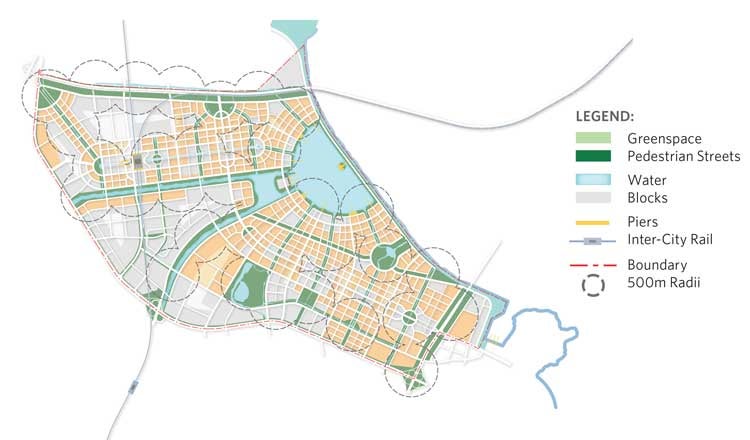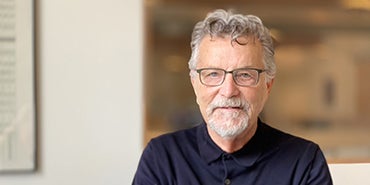
Ending Global Sprawl: Reserve Open Lands and Public Space
This article was originally published in Ending Global Sprawl: Urban Standards for Sustainable and Resilient Development, written by Peter Calthorpe and published by the World Bank's Global Platform for Sustainable Cities. Ending Global Sprawl explores forward-thinking planning strategies for the urban form.
Principle 2: Reserve Open Lands and Public Space
Preserve and create parks and open space for community use, green connections, ecological systems, and adequate storm mitigation areas.
Rationale and Challenges
Without enough public green space, high levels of density can make urban areas feel crowded and uncomfortable. Local parks are often the primary social and recreation space within neighborhoods. Regional parks and open space networks preserve the natural history, identity and geography of a place while also preserving habitat, watersheds and natural buffers. Moreover, as the rich-poor gap in many cities grows, attractive green space that is open to everyone will be vital to helping bridge class divides.
In the city, useful and environmental public spaces and civic clusters can bring economic and social vitality to any urban area. Great public spaces allow a diverse group of people to come together, create economic vibrancy, and increase surrounding property values. Public spaces can give neighborhoods identity and a sense of place, which is vital for creating community and improving quality of life. Without local schools, childcare centers, community centers, senior facilities and clinics, neighborhoods lack key services and community connections.
Many historic city centers have a rich history of vibrant public spaces. But with the rise of subdivisions, superblocks and shopping centers, car-centric planning and streets without human-scale, much of public life is now being pushed inside malls, gated communities, or disappearing altogether. What makes this trend worse is that the limited space that is devoted to public places is often not designed well for people and the human-scale. Planners and designers must consider each city’s unique cultural and demographic situation.
The cost of preserving, purchasing, building and maintaining the shared open space is as critical to the functioning of a city as its streets, utilities and services. It is the foundation of a healthy community and, ultimately, the most efficient way of providing the social life that each human being thrives on.

Goals and Actions
2A: Provide a variety of public open spaces and parks within an easy walking distance
- ACTION 1: Reserve adequate space for local, district and regional parks in new development areas
- ACTION 2: Develop parks with a range of uses, from active recreation to passive leisure for a full range of ages
- ACTION 3: Preserve major natural features within the UGB connected with trails and bikeways
- ACTION 4: Integrate natural and cultural attractions
2B: Provide human-scaled plazas, civic centers and community services
- ACTION 5: Make accessible to people with disabilities and the elderly
- ACTION 6: Size hardscape sections of parks and plazas to the level of reasonable use
2C: Preserve and enhance climate resilience with adequate storm management areas and fire zone buffers.
- ACTION 7: Map growth and infill areas safe from sea level rise, storm surge and fire hazards
- ACTION 8: Enhance natural mitigation systems such as drainage ways, wetlands and forestlands
- ACTION 9: In urban areas, increase detention and infiltration at the building, street and district level
- ACTION 10: Mitigate urban heat island effects with green canopies and reflective surfaces
Metrics
2.1: Distance to Parks and Civic Clusters
At least 80 percent of residential blocks should be located within 500 meters of neighborhood parks and civic clusters and within one kilometer of district parks or greenways
2.2: Quantity of Local and Regional Parks
Reserve a minimum of 40 square meters of parks per capita to be distributed at a range of sizes from local pocket and neighborhood parks to regional recreation facilities and central parks for citywide use

Benefits
Economic
- Improves housing prices: For example, having a view of green space and proximity to water bodies in Beijing raised housing prices by 7.1 percent and 13.2 percent, respectively.
- Improves commercial real estate values: Public space improves economic vitality. Studies show that green spaces can increase the value of commercial office space and retail locations by seven percent or more.
- Saves costs on controlling rainwater runoff: Public green space helps to absorb rainwater runoff, thereby reducing the need for more expensive engineering approaches to guarding against flood risk.
Environmental
- Decreases energy use in hot climates: Tree cover in green spaces can provide shade to limit the need for air conditioning on hot days. In addition to the direct benefits of shading, green space helps reduce the urban heat island effect.
- Increases flood resistance: Parks absorb storm runoff and reduce the risk of flooding and sewage overflows. In Beijing alone, public green spaces saved the government 1.38 billion RMB in rainwater control in 2009.
- Improves air quality: Urban green space can absorb carbon emissions and reduce harmful particles in the air, such as PM10 particles found in dust and smoke.
Social
- Improves physical health: Living near public green space has been linked to lower risks of health conditions such as high blood pressure and cardiovascular disease. Greenery also promotes healthy birth weight and increases life expectancy.
- Improves mental health: Green space has the benefit of increasing the feeling of wellbeing and reducing the risk of depression.
- Creates community cohesion: Well-designed green spaces near community facilities create places where a community finds common ground and people come to know one another.
About the Author: Peter Calthorpe

Peter’s long and honored career in urban design, planning and architecture began in 1976, combining his experience in each discipline to develop new approaches to urban revitalization, suburban growth and regional planning. In 1983, Peter founded the award-winning firm of Calthorpe Associates devoted to sustainable urban design and planning globally. In May 2019, Calthorpe Associates joined HDR. Throughout his career in urban design, planning and architecture, he has been a pioneer of innovative approaches to urban revitalization, community planning, and regional design. For his contribution in redefining the models of urban and suburban growth, he was awarded Urban Land Institute's prestigious J.C. Nichols Prize for Visionaries in Urban Development in 2006. He is one of the founders and the first board president of Congress for the New Urbanism. Metropolis Magazine claims: "The titles of Peter Calthorpe’s books define the recent history of urban design in its most vital and prescient manifestations."

